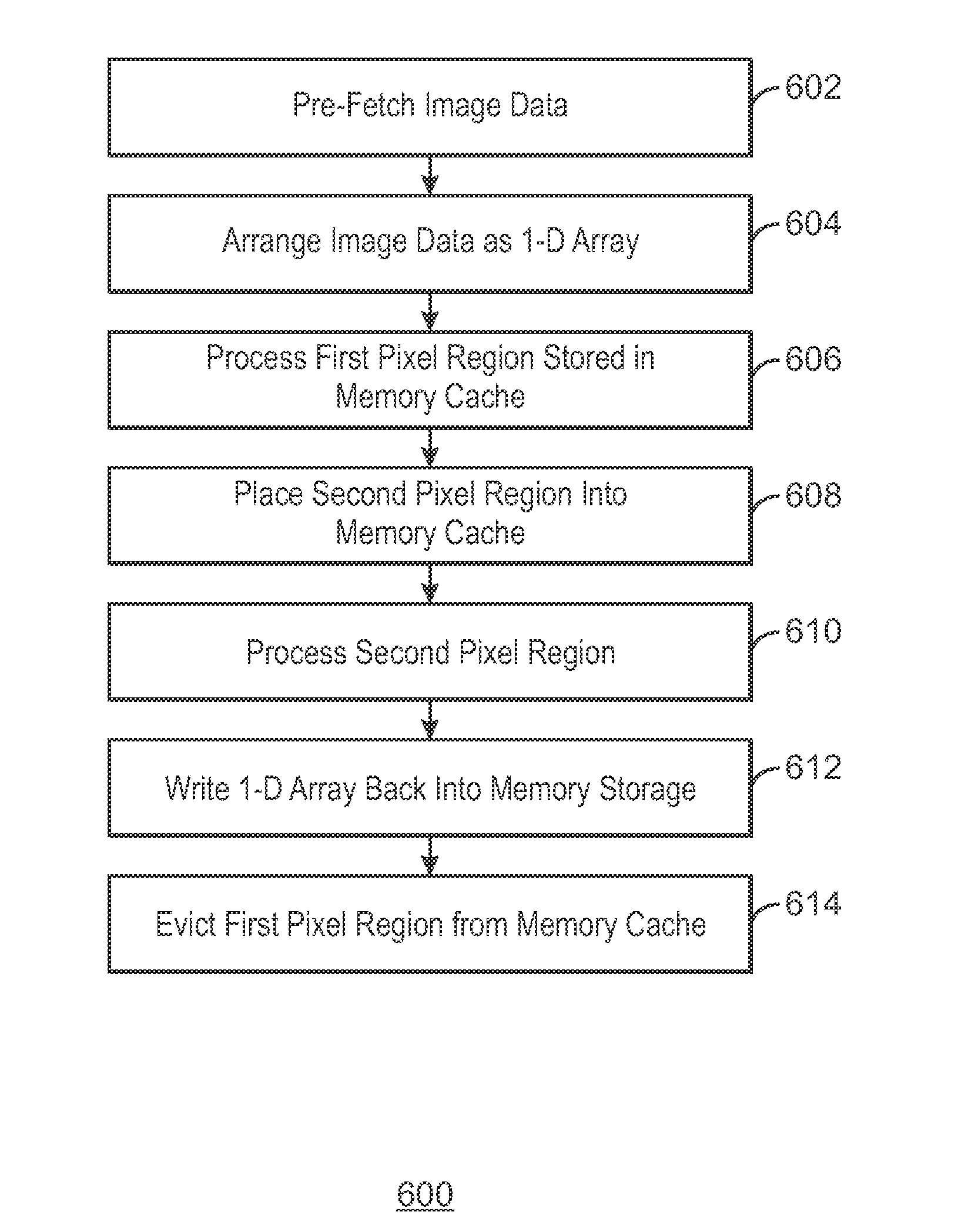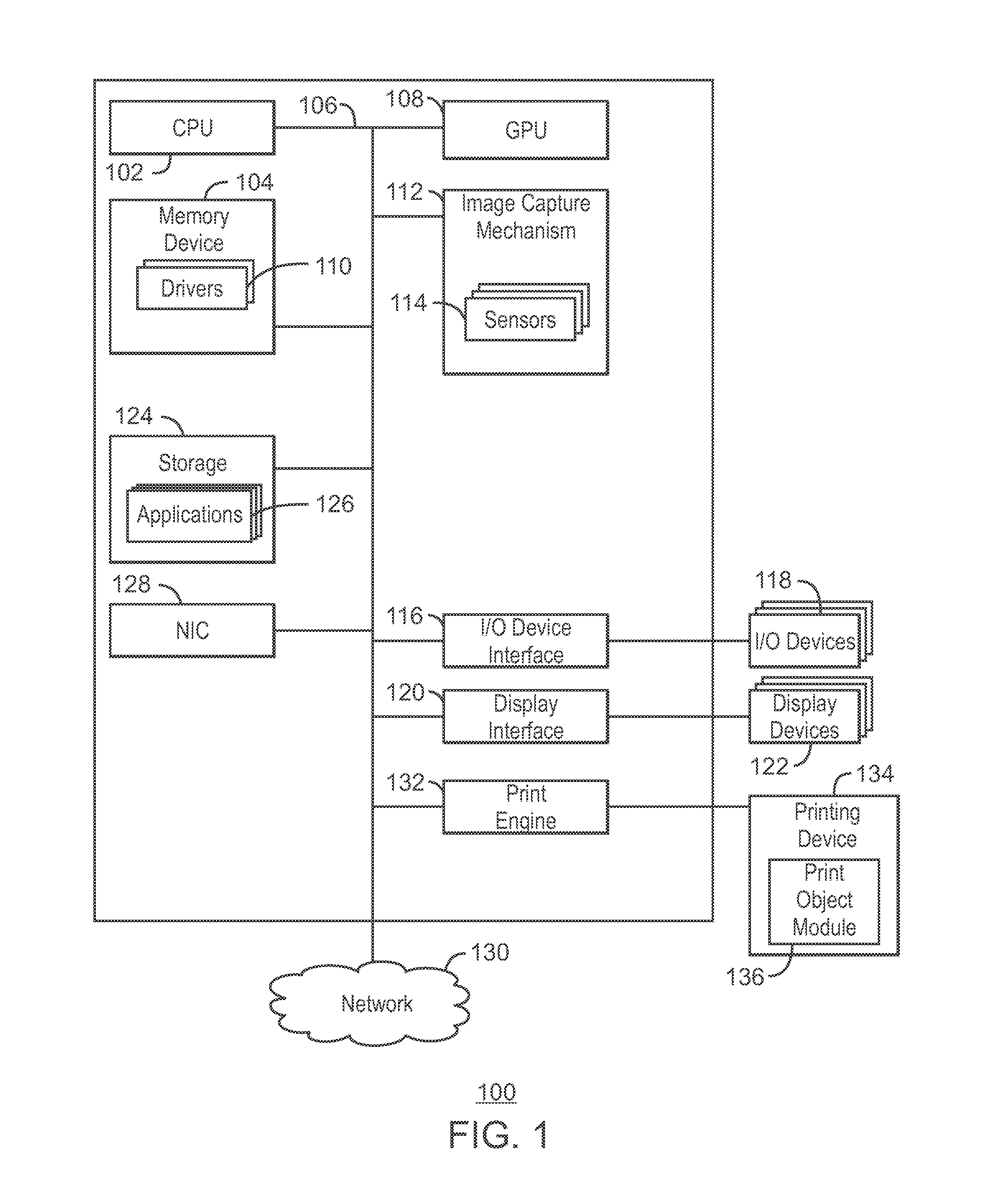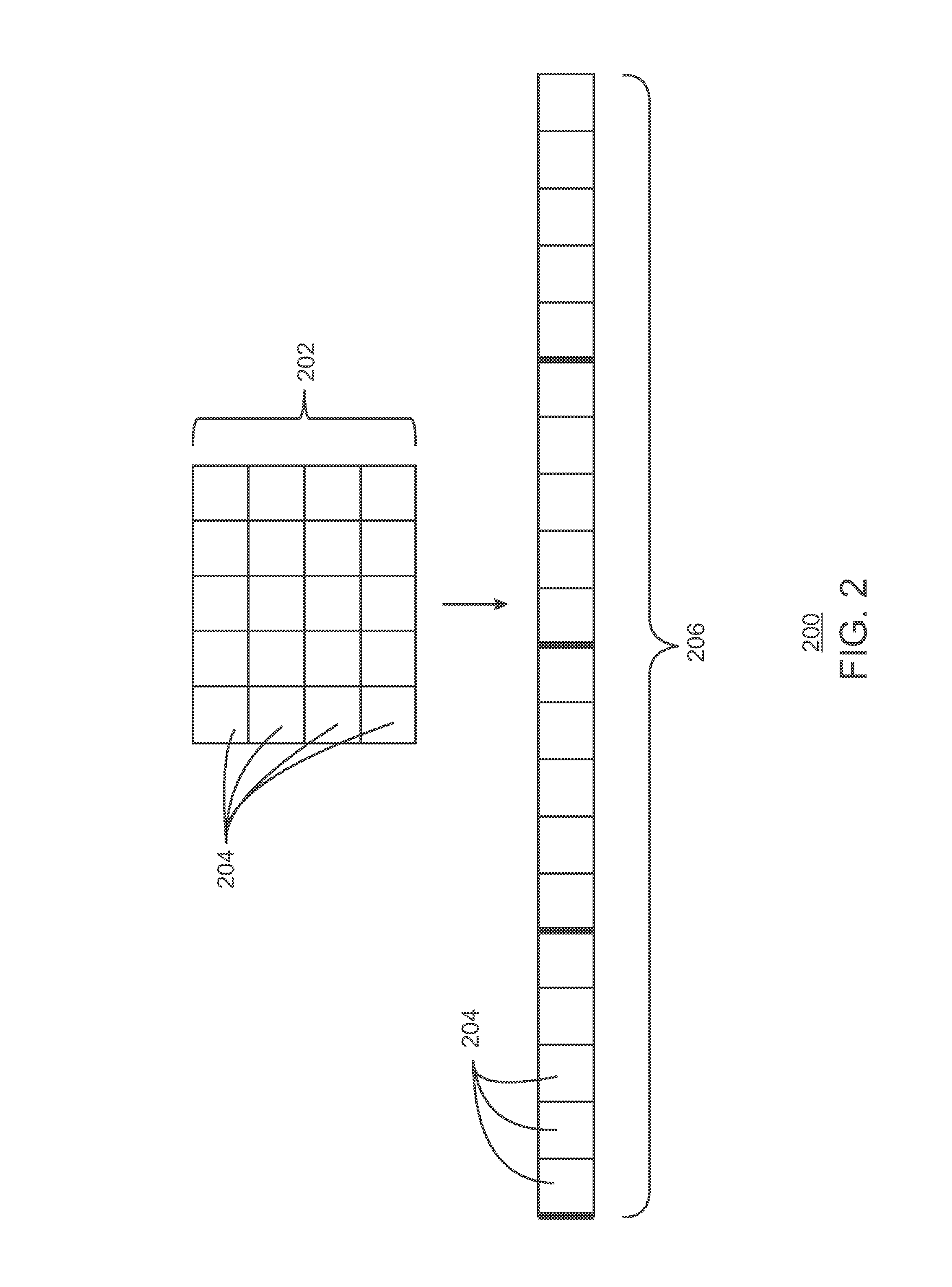Optimizing image memory access
a technology of image memory and access control, applied in the field of accessing memory, can solve the problems of poor imaging performance, various types of inefficiency or errors may occur, and cache misses
- Summary
- Abstract
- Description
- Claims
- Application Information
AI Technical Summary
Benefits of technology
Problems solved by technology
Method used
Image
Examples
example 1
[0063]An apparatus for accessing an image in a memory is described herein. The apparatus includes logic to pre-fetch image data, wherein the image data comprises pixel regions and logic to arrange the image data as a set of one-dimensional arrays to be linearly processed. The apparatus also includes logic to process a first pixel region from the set of one-dimensional arrays, the first pixel region being stored in a cache, and logic to place a second pixel region from the set of one-dimensional arrays into the cache, wherein the second pixel region is to be processed after the first pixel region has been processed. Additionally, the apparatus includes logic to process the second pixel region, logic to write the processed pixel regions of the set of one-dimensional arrays back into the memory storage, and logic to evict the pixel regions from the cache.
[0064]The image data may be a line, region, block, or grouping of the image. The image data may be arranged using a set of pointers t...
example 2
[0065]A system for accessing an image in a memory storage is described herein. The system includes the memory storage to store image data, a cache and a processor. The processor may pre-fetch image data, wherein the image data includes pixel regions, arrange the image data as a set of one-dimensional array to be linearly processed, process a first pixel region from the image data, the first pixel region being stored in the cache, and place a second pixel region from the image data into the cache, wherein the second pixel region is to be processed after the first pixel region has been processed. The processor may also process the second pixel region, write the set of one-dimensional arrays back into the memory storage, and evict the first pixel region from the cache.
[0066]The image data may be arranged using a set of pointers to the image data. The system may include an output device communicatively coupled to the processor, the output device configured to display the image. The outp...
example 3
[0067]A tangible, non-transitory computer-readable media for accessing an image in a memory storage is described herein. The tangible, non-transitory computer-readable media includes instructions that, when executed by the processor, are configured to pre-fetch image data, wherein the image data comprises pixel regions, arrange the image data as a set of one-dimensional arrays to be linearly processed, and process a first pixel region from the image data, the first pixel region being stored in a cache. The instructions are also configured to place a second pixel region from the image data into the cache, wherein the second pixel region is to be processed after the first pixel region has been processed, process the second pixel region, write the set of one-dimensional arrays back into the memory storage, and evict the first pixel region from the cache.
[0068]The one-dimensional array may be a linear sequence of pixel regions. The image data may be arranged using a set of pointers to t...
PUM
 Login to View More
Login to View More Abstract
Description
Claims
Application Information
 Login to View More
Login to View More - R&D
- Intellectual Property
- Life Sciences
- Materials
- Tech Scout
- Unparalleled Data Quality
- Higher Quality Content
- 60% Fewer Hallucinations
Browse by: Latest US Patents, China's latest patents, Technical Efficacy Thesaurus, Application Domain, Technology Topic, Popular Technical Reports.
© 2025 PatSnap. All rights reserved.Legal|Privacy policy|Modern Slavery Act Transparency Statement|Sitemap|About US| Contact US: help@patsnap.com



